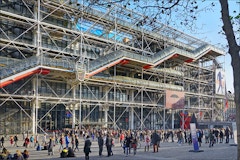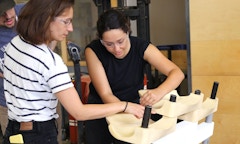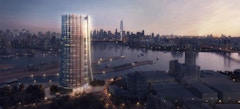
Drawdown: Paul Hawken Gets Real with Climate Change
Drawdown is an inspiring new effort to manage atmospheric carbon and the resulting climate impacts. This brief reveiw discusses the book, the movement, and the potential.

Drawdown is an inspiring new effort to manage atmospheric carbon and the resulting climate impacts. This brief reveiw discusses the book, the movement, and the potential.

What does an engineer do? An engineer imagines. What are your sources of inspiration? Mic Patterson remembers Peter Rice and discusses his enduring legacy.

A design-build class at the University of Louisiana explores the territory of the “tiny-house.” Professor Geoff Gjertson describes the 216 square foot MODESTEhouse and shares his personal experience of living small.

A small team of digital designers at the Schüco Virtual Construction Lab (VCL) in NYC is developing a new way for clients to experience and evaluate facade products. The VCL will be demonstrating the technology at the conference in Los Angeles on March 12-13.

Mic Patterson unpacks his crystal ball and looks ahead to the forces that will shape buildings over upcoming decades. Expect some surprises down the road…

The Architectural Glass Institute (AGI) of Philadelphia, Pa., sponsored its second annual Architectural Glass Student Design Competition in January, where third-year Jefferson University architecture students competed to design glass learning pods.

The age-old trend of more and larger lites of glass in the building skin dates back to the Roman Empire. Despite the challenges of highly glazed facades, it appears we just can’t get enough. Is there a “beyond” glass? If so, what does it look like?
The 71Above restaurant on the 71st floor of the U.S. Bank Tower features 192 electrochromic windows installed by Giroux Glass, Inc. Explore the sensory experience made possible by glazing choices and why we’re apt to see more tech-driven smart window installations in the future.

NYCCT Architecture Program Chairman Sanjive Vaidya, asked HOK facades architect John Neary to give a design studio focused on detailing the building skin system. With HOK designer Michael Miller, Neary led a group of students through the facade system design development process.

HOK is a global design, architecture, engineering and planning firm. Our people collaborate across a network of 24 offices on three continents.

2018 teams included; Morphosis, SHoP Architects, Sasaki/Studio NYL, University at Buffalo, AECOM, and Radical Matter. The ACAWorkshop is an outstanding model of industry-academia partnership aimed at the ongoing education of students and practitioners alike.

Reviewing John Neary's Circadian Curtain Wall, one is confronted with an insistent question: why hasn't anyone started construction on this intriguing building design yet? John has provided FTI with a presentation to explain the thinking behind the Circadian Curtain Wall in greater detail.

Highly transformable materials can be used as adaptive exterior shading systems by leveraging the relationship between external stimuli (heat) and


Awareness of embodied carbon impacts is surging like hurricane-driven floodwaters and altering the landscape of everything in its path. What are the implications for buildings, the facade system and urban habitat? FTI is taking this on with its 2019 Forum series.